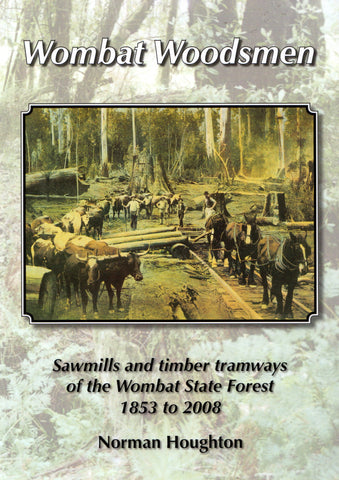Wombat Woodsmen: Sawmills and Timber Tramways of the Wombat State Forest 1853 to 2008 (NH-008)
Product No.: NH-008
Title: Wombat Woodsmen: Sawmills and Timber Tramways of the Wombat State Forest 1853 to 2008
Author(s): Houghton, Norman
Illustrator(s): N/A
Publisher: Self-Published
ISBN: 9780958301366
Condition: New
Binding: Softcover
Dust Jacket: None
Edition: Revised & Reprinted
Publication Year: 2021
Features: 166 Pages with Black/White Photos, Illustrations & Fold-Out Colour Map at Rear of Book.
The Wombat State Forest (locally: Bullarook) is located 50 kilometres west of Melbourne, Victoria, Australia, between Woodend and Daylesford, at the Great Dividing Range. The forest is approximately 70,000 hectares (170,000 acres) in size and sits upon Ordovician or Tertiary sediments. The Bullarook Wombat State Forest was proclaimed in 1871. The only initiative in Australia to introduce community forestry, within the internationally understood context, is in the Wombat State Forest. It is managed by the Department of Sustainability and Environment.
The management plan covers several areas such as firewood and other products; protection of water supplies, conservation of biodiversity, and conservation of landscape. Other areas of importance include cultural heritage, research, education, tourism, recreation, mineral exploration, mining, and grazing. he forest is probably named after the Wombat township (now Daylesford) The foundations of large scale commercial sawmilling in Victoria were laid in the Wombat Forest from 1853.
This forest was the testing ground for ideas and attitudes to the harvesting, transport and sawing techniques that forged resource management and sawmilling management styles well into the 20th century. The discovery of gold throughout Victoria from 1851 onwards led to the opening of numerous mining sites and the mining centres of central Victoria were to require an enormous supply of timber and the eucalypt trees of the Wombat Forest were ideally placed to supply that need.



